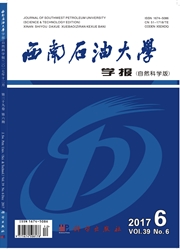

 中文摘要:
中文摘要:
生烃热模拟实验是烃源岩成烃潜力与资源评价的重要手段,可再现地质体中有机质热解演化过程,为评价盆地成烃潜力、过程与机理、推导成烃模式及动力学提供理论依据和实验资料。模拟实验样品的选择取决于研究目的和沉积盆地中有机质的类型及演化程度,实验模拟装置体系主要有开放体系和封闭体系两种,开放体系模拟有机质初始裂解反应,封闭体系模拟原油和天然气的二次裂解反应。通过温度、压力、水介质及矿物质等不同实验条件下有机质成烃的模拟实验研究,使实验条件尽量接近地质实际条件,结合沉积盆地热史、沉积史,实验结果可揭示生烃史与沉积盆地的演化关系,为盆地模拟提供重要参数;模拟结果可有效外推到地质实际揭示烃类形成机理和排烃效率。开发岩石围压控制等新的实验技术,加强天然气二次裂解动力学研究、有机质、地层水和矿物质相互作用及孔隙发育条件下的高温高压模拟是生烃热模拟实验领域的发展方向,时页岩气等非常规油气资源评价具有重要意义。
 英文摘要:
英文摘要:
Experimental pyrolysis simulation on hydrocarbon generation from organic-rich sources is an important approach to the evaluation of hydrocarbon generation potential and resource assessment, and it can be used to simulate the physical and chemical evolution of organic matters under geological conditions. The results of pyrolysis experiment provides the tools and data for the appraisal of the hydrocarbon generation potential and the study of the hydrocarbon formation processes, genetic mechanism and chemical kinetics. The samples used in pyrolysis experiments are usually from immature to low mature, depending on the purpose of the study and also the type of organic matter and the thermal evolution of sedimentary basins. Open system and close system are two different types of experimental apparatuses designed to probe special objectives. The open system is used to simulate primary kerogen cracking, and the closed one is used to investigate the oil and gas secondary cracking at high thermal maturation level. The effect of temperature, pressure, water and minerals on hydrocarbon generation from organic matter can be quantified through experimental simulation. As a result, the relationship between oil and gas generation history and the evolution of a sedimentary basin is revealed with the combination of the thermal history and the sedimentary history of the basin, which provides the important parameters for basin modeling. With the demand of the rapid increase in the exploration and development of shale gas and tight oil unconventional resources, in order to semi-quantitatively or quantitatively extrapolate the results of laboratory simulation to geological conditions, we outlined the following new research topics related to pyrolysis simulation from this review, including: to develop the experimental technique, especially well-constrained confining pressure for rock cylinders at high temperature and pressure condition; to further investigate hydrocarbon formation mechanism and petroleum expulsion efficiency; to enha
 同期刊论文项目
同期刊论文项目
 同项目期刊论文
同项目期刊论文
 Ore Genesis of the Kalatongke Cu-Ni Sulfide Deposits, Western China: Constraints from Volatile Chemi
Ore Genesis of the Kalatongke Cu-Ni Sulfide Deposits, Western China: Constraints from Volatile Chemi The Kalatongke magmatic Ni-Cu deposits in the Central Asian Orogenic Belt, NW China: product of slab
The Kalatongke magmatic Ni-Cu deposits in the Central Asian Orogenic Belt, NW China: product of slab The chemical compositions and abundances of volatiles in the Siberian large igneous province: Constr
The chemical compositions and abundances of volatiles in the Siberian large igneous province: Constr Noble gas isotopic constraints on the origin and evolution of the Jinchuan Ni-Cu-(PGE) sulfide ore-b
Noble gas isotopic constraints on the origin and evolution of the Jinchuan Ni-Cu-(PGE) sulfide ore-b Precise U–Pb zircon–baddeleyite age of the Jinchuan sulfide ore-bearing ultramafic intrusion, wester
Precise U–Pb zircon–baddeleyite age of the Jinchuan sulfide ore-bearing ultramafic intrusion, wester Erratum to: Precise U-Pb zircon-baddeleyite age of the Jinchuan sulfide ore-bearing ultramafic intru
Erratum to: Precise U-Pb zircon-baddeleyite age of the Jinchuan sulfide ore-bearing ultramafic intru The Permian Huangshanxi Cu–Ni deposit in western China : intrusive–extrusive association, ore genesi
The Permian Huangshanxi Cu–Ni deposit in western China : intrusive–extrusive association, ore genesi 期刊信息
期刊信息
